Mandevilla Care Guide - How to Grow Dazzling Rocktrumpet Vines
Mandevilla is a unique plant which, in comparison to other species is not very well known. Interestingly enough, it can be grown both in garden flowerbeds, and in pots as a balcony or patio decoration. Are you wondering about the origins of mandevilla vine, and how to care for such a plant? Check the most important information.

Mandevilla – what kind of plant is it?
Mandevilla (Mandevilla sanderii) is an exceptionally interesting plant. Gardeners refer to it by various names. It’s known as dipladenia, sundaville or rocktrumpet. But all these names depict the same perennial. In nature, it grows mainly in Brazil. It can also be encountered in some Mediterranean countries, as the plant loves the warm climate.
Interestingly enough, mandevilla is a perfect plant for garden flowerbeds, but it can also be grown in pots. It has characteristic, highly saturated, green and quite dark leaves. The plant develops many flowers. They look like medium-sized trumpets and can have various colors. Pink mandevilla flowers are the most popular, but other possible colors include:
- white,
- red,
- rust.
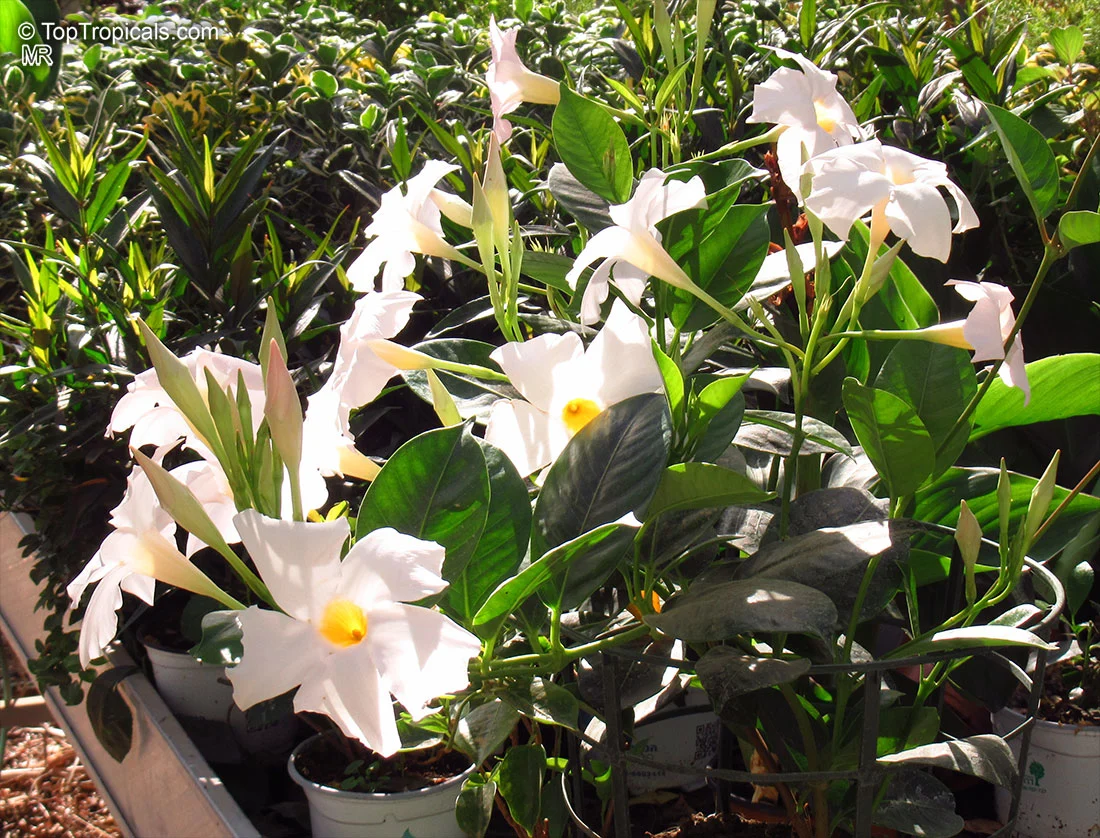
Mandevilla – noteworthy varieties
There are many varieties of this plant in the world. Some are referred to as sundaville because of the combination of different plants. Here are the most valued mandevilla varieties:
- Pretty Red
- Cream Pink
- Red Star
- Pearl White
- Pink
- Cosmoc
- Mini
- Grand
- Classics
- Beauty
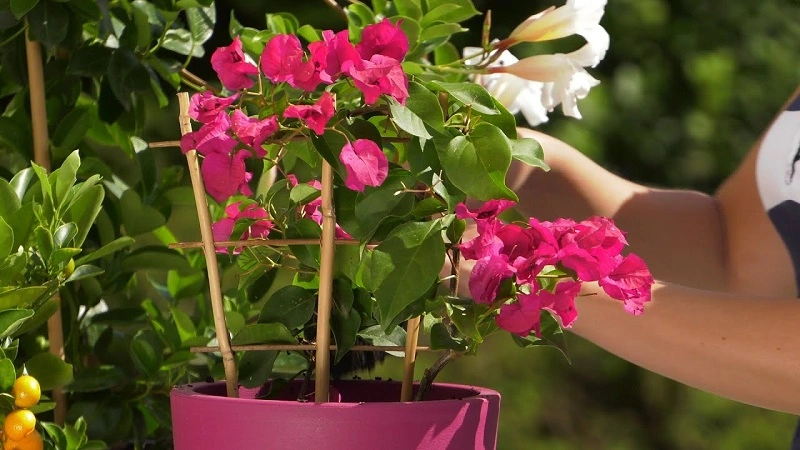
Is mandevilla a perennial?
Mandevilla is a perennial which one can enjoy for a very long time. But the durability of the plant depends on the provided conditions and care, which might be quite demanding. Experienced gardeners shouldn’t have any problems with taking care of the plant.
What are the best conditions for mandevilla plants?
Dipladenia is a demanding plant when it comes to the soil it grows in. The ground should be rich in peat and mixed with some sand. Prior fertilization with compost is also recommended. Thanks to this, mandevilla has the most important nutrients provided. Make sure there’s no standing water in the soil, as it might lead to root rot.
Mandevilla likes warmth. 18-20°C (64.4-68°F) is the best temperature for this plant. It reacts poorly if it drops below 14-15°C (57.2-59°F).
Fertilizing is crucial for rocktrumpet plants. It should be done once every 2 weeks. We recommend using universal multi-ingredient products designed for blooming plants. Just make sure they don’t contain a lot of calcium, as it’s might be harmful for dipladenias. The plant should be fed starting from April, until it finishes blooming.
Does rocktrumpet like full sun?
Mandevilla vine loves sunny locations and the warmth they provide. The plant needs such a place for its proper development. While it can tolerate half-shade, note that it produces fewer flowers in such conditions. It might also cause problems with their colors. When planting mandevilla vine in half-shade, make sure to feed it regularly with special fertilizers.
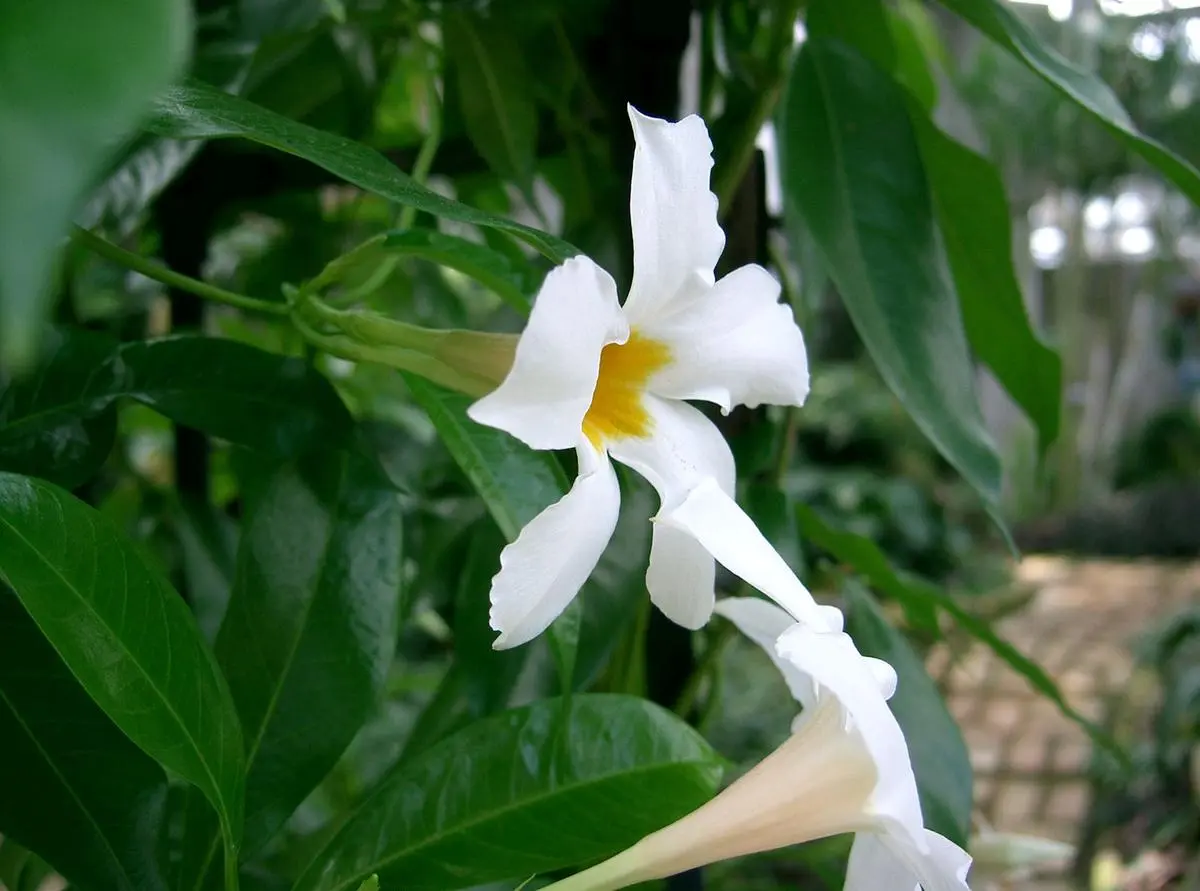
Mandevilla – propagation
Mandevilla is not difficult to propagate, and everyone can do it. After retrieving a cutting, dip it in a rooting hormone and plant the vine in a pot or directly in a flowerbed.
Before putting the cutting in a rooting hormone, the milky sap has to be removed. The graft has to be soaked in water. The next steps can be performed afterwards.
Mandevilla vine – diseases and pests
Mandevilla is a rather vulnerable plant when it comes to diseases and pests. Yellowing and browning of the leaves is the most common issue. It might be a result of:
- not enough nutrients, e.g., nitrogen,
- lack of water,
- too much water,
- phoma blight disease,
- rhizoctonia.
If the plant is watered too intensely, and the water stands in the ground, another fungal disease might develop – grey mold. It attacks not only roots and leaves, but also flowers.
Pests attacking the plant might also be a big problem. Spider mites and scale bugs are the most common ones. To fight them, you can use products purchased in a garden store. Some of them have natural ingredients, so you don’t have to worry about the plant and its health.
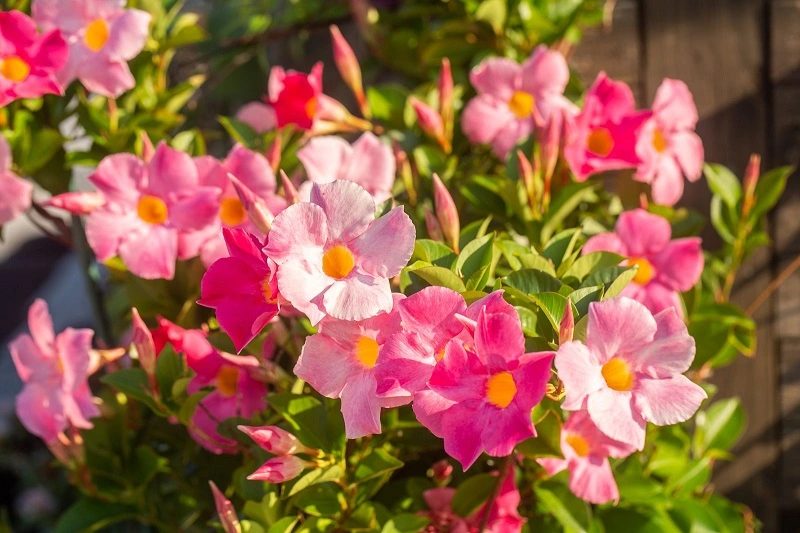
Mandevilla – winter care
Mandevilla is a perennial, but proper winter care is important, as the plant doesn’t like low temperatures and frost.
For winter, the plant should be moved indoors to a place where the average temperature oscillates between 13 and 15°C (55.4-59°F). Watering during this time should be limited. The plant has to turn dormant, which helps it regenerate before the next season.
Because rocktrumpet requires certain conditions, it’s better to grow mandevilla vine in pots rather than in the ground. The latter option is definitely more demanding.
Why isn’t mandevilla a popular plant?
Mandevilla is not popular for two reasons. The first one is the average price for a seedling. Unfortunately, not many flower shops offer this species, and even if they do, the prices aren’t the lowest.
Quite demanding care is another issue. Mandevilla is surely not a plant for beginner gardeners. Because of this, it’s usually picked by people with experience or those who like challenges and aren’t scared of a possible failure.
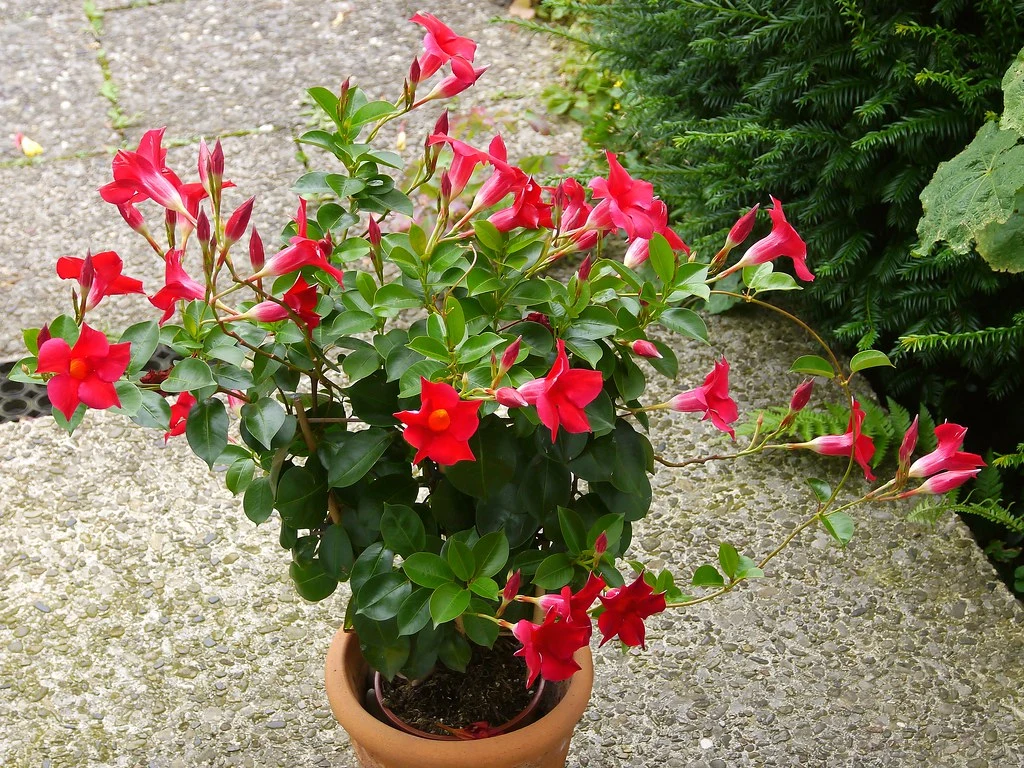
📍 Where to buy a mandevilla?
Mandevilla is not the most popular plant, so it might be difficult to get in some regions. But most large garden centers and plant nurseries offer this species.
📍 How to winterize mandevilla vine?
Make sure the plant is stored at the correct temperature in winter. Typically, it's moved indoors. Watering gets limited, so the mandevilla can turn dormant and regenerate.
📍 What is the best soil for mandevilla?
The soil for a mandevilla has to be very rich. Peat mixed with sand is the best option. You can enrich it further using compost.
📍 Why isn't my mandevilla blooming?
There are a few possible reasons why a mandevilla stopped blooming. A wrong location, e.g., in shade might be one of them. Not enough nutrients or too much water in the ground might also cause this problem.
Featured articles




